Sunday Punch: K-25 workers go above the line of duty
- Oops!Something went wrong.Please try again later.
This column is written by Barbara Rogers Scollin, grand-niece of Major General Kenneth D. Nichols. She visited Oak Ridge and found it difficult to identify artifacts associated with her uncle. She donated funds to the Friends of the Oak Ridge Public Library to create an organized effort among historians and archivists in Oak Ridge to better document and preserve artifacts that might otherwise be lost. She also participated with Dave Nichols, Nichols’ son, on a video cast with Keith McDaniel and myself. You can watch that video cast here: https://youtu.be/EBH7dhtasUc.
Now enjoy a look at the Sunday Punch from the perspective of someone who became fascinated by just a photograph and then dug into the facts behind that photograph.
***
What’s the significance of this plane and why is it called ‘"Sunday Punch"? That’s how it all started.
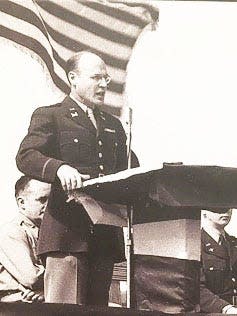
Sandy Fye, registrar at the National Museum of Nuclear Science & History in Albuquerque, New Mexico, gave me this photo because my uncle, Kenneth D. Nichols, is standing at the podium. I recognized my uncle, but had no idea about the details. At the time, he was a colonel in the U.S. Army and later promoted to major general. Following is a short summary of my discoveries.
First used in 1915, the term “Sunday punch” is defined by the Merriam-Webster dictionary as:
A powerful or devastating blow, especially: a knockout punch
Something capable of delivering a powerful or devastating blow to the opposition; saving his "Sunday punch" for the end of the campaign.
In Oak Ridge, Tennessee, work on the atomic bomb continued when Frances Smith Gates, editor of The Oak Ridge Journal, first used the phrase "Sunday Punch" on Sept. 14, 1944: “Right Now, the most important thing you can remember in your daily work is this: our part of this war will not end with the defeat of Germany. As the District Engineer [Colonel Kenneth D. Nichols] pointed out in his message to the workers of this project last week, Japan is our final objective … We can defeat the Jap, decisively and more quickly, by remembering that every work-hour registered here is a Sunday punch aimed straight at Tojo’s button. Remember this when we defeat Germany. Stay on the job and finish the Japs!”
Wanting to literally deliver a Sunday punch to the Japanese, workers of the J.A. Jones Company decided to donate overtime pay from two Sundays in February 1945 toward purchasing a bomber. The momentum grew to include all workers at the K-25 Area (J.A. Jones, Comstock-Bryant Electric Co., Midwest Piping, William A. Pope Co., Schulman Electric, Poe Piping, Lambert Brothers, Birmingham Slag Co., Reilly-Benton Co., and Happy Valley Enterprises). The K-25 Bomber Committee and the companies represented by the workers cooperated with the efforts.
The K-25 workers donated $150,000 toward the purchase of a B-25 Billy Mitchell bomber they named Sunday Punch. On March 18, 1945, after Miss Belle Greer, the only woman member of the K-25 Bomber Committee, christened the plane, A.L. Davis, chairman of the committee, formally presented the plane to Lt. Col. Sanford Chester of the Army Air Forces at the Knoxville Airport while a "huge crowd looked on." Music was furnished by the 693rd Air Force Band, of the ATC base at Nashville and Colonel Kenneth D. Nichols was the principal speaker.
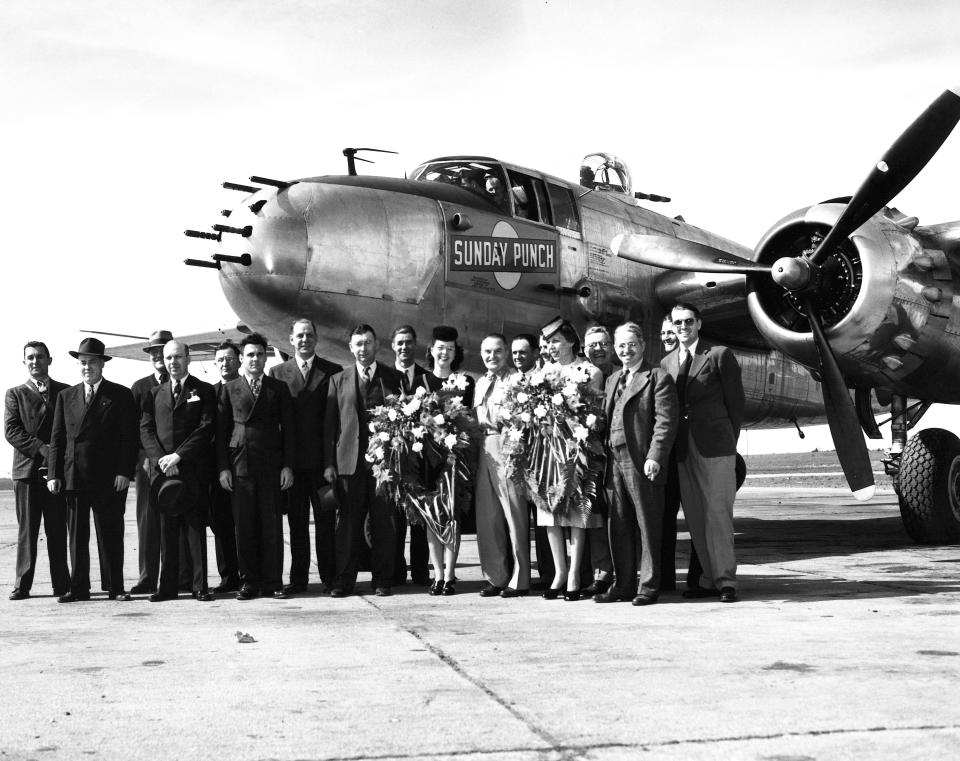
“You have contributed two things,” Col. Nichols told workers in his address. “You have bought something tangible to deal a blow to the enemy . . . and by working two Sundays extra, you have advanced the completion date of a great plant. You’ll be proud you work at that plant,” the District Engineer continued. “Its completion will mean the saving of the lives of our fighting men.”
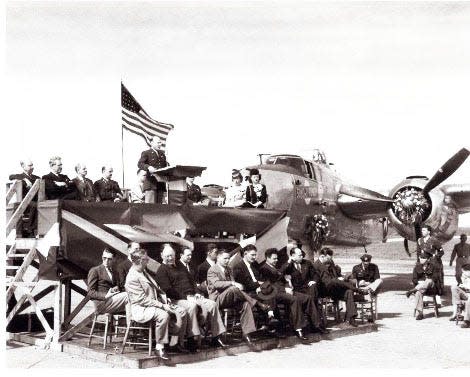
Immediately following the dedication ceremony, Sunday Punch was ready for war and sent to the China-Burma-India theatre as a member of the “Earthquakers” medium bomber unit. Upon landing in India, the plane was amazingly assigned to pilot Lt. Thomas Evans of Knoxville who was interviewed for the Oak Ridge Journal’s July 19, 1945 edition. “I was in my glory. I had my own airplane, a brand-new one – and bought by the home-town folk! I knew you folks would get a great kick out of it, too.” Lt. Paul DuQuette was co-pilot; Lt Lee Fong, navigator; Staff Sgt Harlan Mize, radio/gunner; Staff Sgt. Vern Rife, Jr, engineer/gunner and Staff Sgt. Fred Williams armorer/gunner.
According to the Sept. 27, 1945 Oak Ridge Journal edition, Sunday Punch “was never hit by enemy fire and no mechanical trouble was reported during the combat missions. The B-25 took part in the final allied drive into Rangoon … bombing .. to prepare the way for Allied ground troops.” Later Sunday Punch “flew 1600 miles from its base to bomb Ban Takli airfield in Thailand, in one of the longest medium bomber missions on record.”
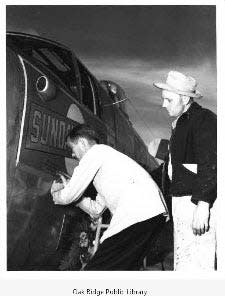
After the war, Sunday Punch was given to the Nationalist Chinese and was never seen or heard from again.
Grateful acknowledgements to K. David Nichols Jr., Sandy Fye, Ray Smith, and Mike Stallo for their assistance with this article.
***
Thanks Barbara! I appreciate your excellent research and documentation of a very good story of Oak Ridge. The Sunday Punch was a proud accomplishment of workers at K-25.
Readers, there is an exceptionally good display of the history surrounding the Sunday Punch in The Oak Ridge History Museum at 102 Robertsville Road. Much is said about Tom Evans who flew Sunday Punch and his photograph is displayed there as well. Several photographs are there and the story is told in great detail about the workers who donated their overtime pay to purchase the B-29 bomber affectionally named, “Sunday Punch.” I dare say this is the most extensive display of the Sunday Punch that exists. It is something all Oak Ridgers can take pride in and enjoy.
There is much more to see at the Oak Ridge History Museum, including the replica of a hutment and a small statue of Robert Oppenheimer, as well as an enlarged image of the famous Ed Westcott photograph of Oppenheimer at the Guest House. I have printed a small version of that photo showing the mantle included in the photo and placed it on that same mantle. The museum even has a chair from the Guest House that Oppenheimer may well have been sitting in when the photo was made.
With the current interest in the "Oppenheimer" movie, a significant increase in Oak Ridge tourism is underway. If you have not seen the movie, I encourage you to go see it. Oak Ridge is only mentioned a couple of times, but the connection is there.
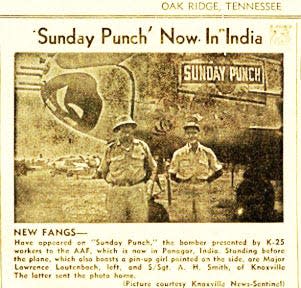
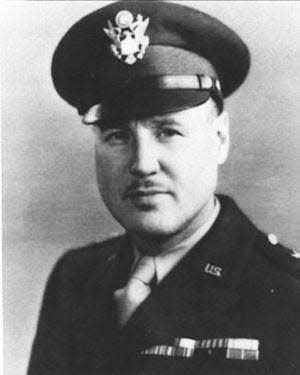
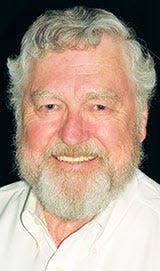
This article originally appeared on Oakridger: Sunday Punch: K-25 workers go above the line of duty

